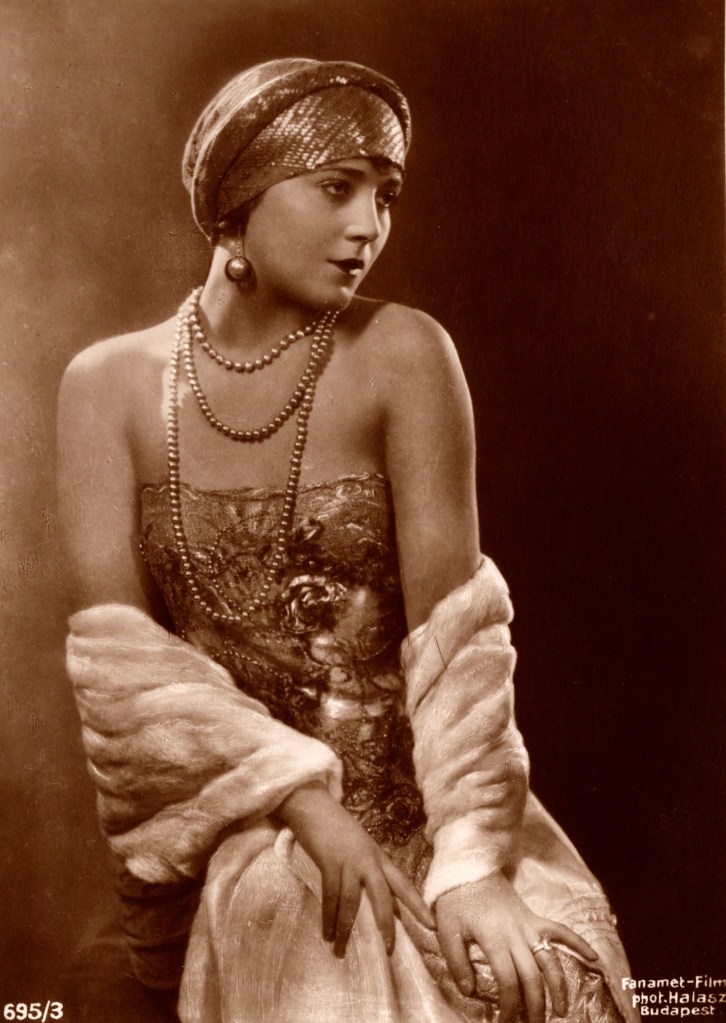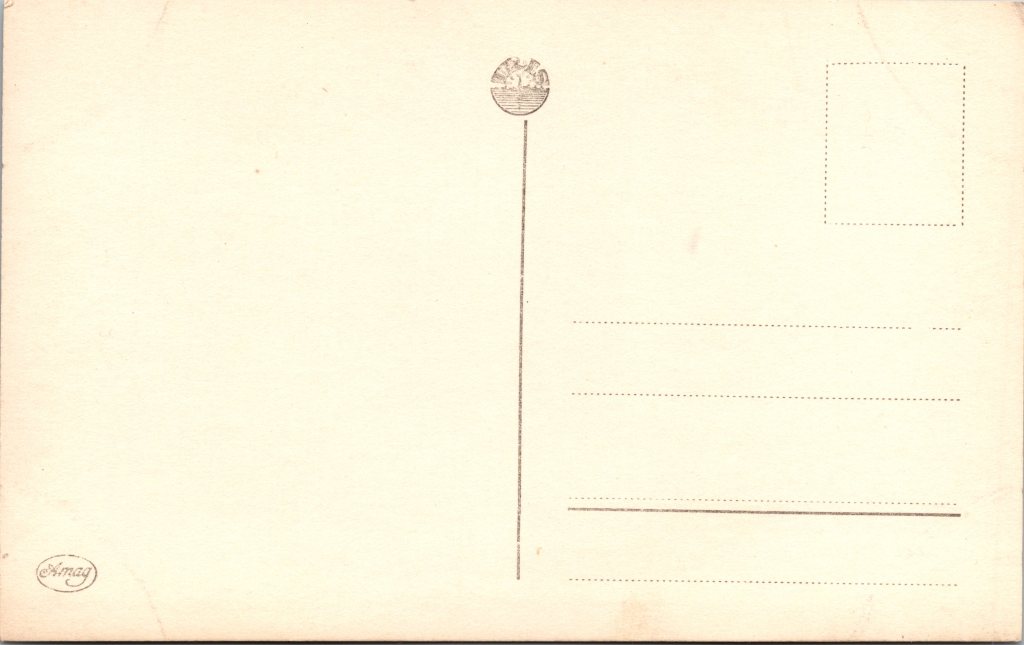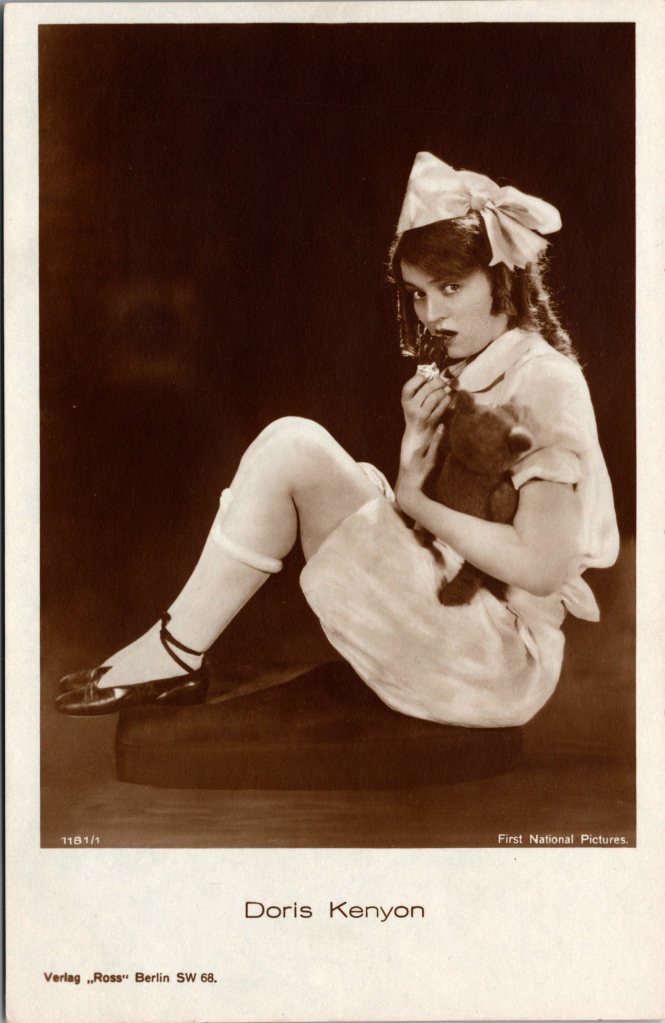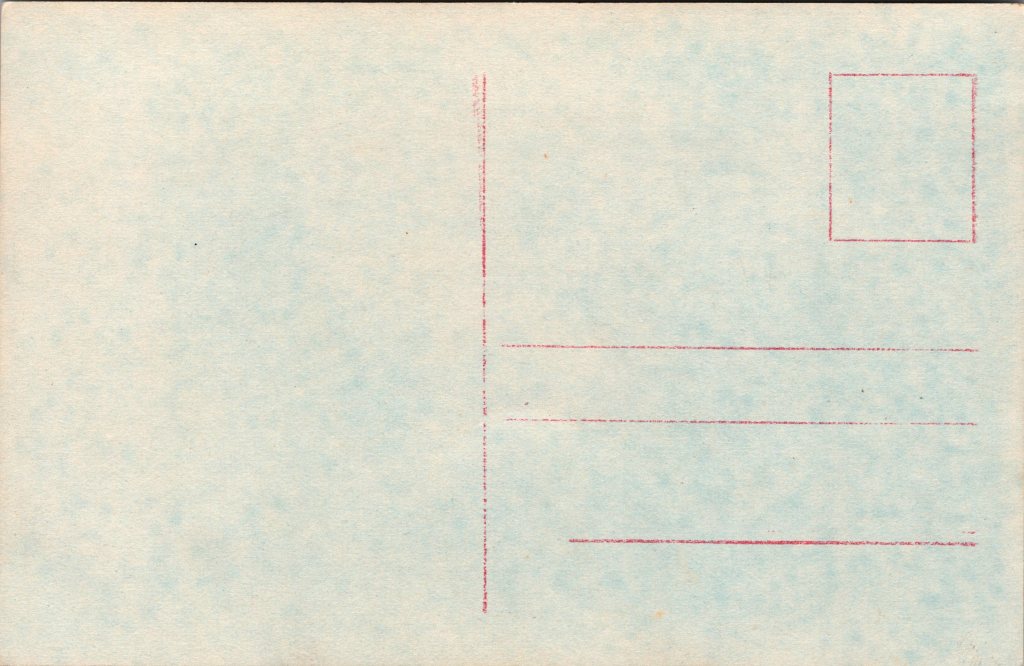This vintage real photo postcard features beautiful and sensuous actress Miss Vilma Banky (1901-1991). She was born in Hungary but was an American silent film actress. She began her acting career in Budapest and later France, Austria, and Germany. In 1925, Banky was plucked from Europe by Hollywood film producer Samuel Goldwyn. American audiences fell in love with her and she earned the moniker of “The Hungarian Rhapsody”. In a review of her first film, “The Dark Angel” (1925), the New York Times (1925) described Banky as “a young person of rare beauty”. In the mid and late 1920’s she was Goldwyn’s biggest money maker. Some of her most famous roles were in the films “The Eagle” (1925) and the “The Son of the Sheik” (1926). She played romantic roles opposite Ronald Coleman and Rudolph Valentino. The advent of sound films is believed to have short circuited her acting career. Apparently her thick Hungarian accent was unacceptable. However, around the time of the introduction of sound films, it is thought that she had lost her enthusiasm about films and was more interested in settling down with actor Rod La Rocque (1898-1969), whom she married in 1927. Goldwyn gave the bride away and Cecil B. DeMille was the best man. By 1928, she was talking of retirement. In all, she made 24 films of which only eight remain in existence in their complete form. Her filmography begins in 1919 and ends in 1933. After leaving filmdom, she and her husband had a career in real estate and she pursued the sport of golf. The Chicago Tribue (1993) entitled Banky’s obituary “Silent Film Star Makes Dramatic Exit”. It is interesting to note that the article appeared nearly two years after her death. It seems that the press and Hollywood watchers never noticed her death. Apparently she lay sick in bed for the last ten years of her life, at home, and later in a nursing facility, without any visitors. The author of the article asserts “She died the nightmare death of every elderly person, alone, her life unremembered, her passing unlamented”. Banky was upset and angry about being abandoned, that she instructed her attorney to inform no one, including the newspapers, upon her passing. The attorney followed her instructions but when the press eventually learned of her death, the lawyer stated to reporters that Banky had no visitors because none of her friends or family still survived. She left a $600,000 trust fund to her sister’s two children in Hungary. After a difficult search the attorney found the two nieces in rural Hungary “living in peasant squalor”. The women had never met their Aunt and the last letter exchanged with Banky had been thirty years earlier. Banky’s lawyer had his hands full because a German heir hunting company had found them first and got them to sign over twenty percent of their inheritance for a finding-fee. At the time of the articles publication, the lawyer planned to pay off the company with a smaller fee and set up distant banking for the nieces who lived in an area that had no banks. Although after her death, the lawyer turned out to be a committed and wonderful friend to Vilma Banky and her family. This vintage postcard was produced by the Iris Verlag company. Iris Verlag was the most important Austrian publisher of film star postcards. It operated from Vienna during the 1920’s and 1930’s. The postcard is part of a series (no.695/3). The photographer of this portrait of Banky is Halasz of Budapest. The postcard was made for Fanamet-film which was a Austrian film distribution company. (SOLD)
THE SAD STORY OF VILMA BANKY: BEAUTIFUL SILENT FILM STAR
Tags: dailyprompt, dailyprompt-1890, Halasz, Iris Verlag, Rod LaRocque, Ronald Coleman, Valentino, Vilma Banky
DORIS KENYON : ADORABLE STAGE ACTRESS : TEDDY BEAR : REAL PHOTO POSTCARD
This real photo postcard features a portrait of an adorable American film and television actress named Doris Kenyon (1897-1979). She grew up in Syracuse, New York. Her father was a minister and poet. He was a protege of Henry Wadsworth Longfellow. Doris studied at Packer College, and later on, at Columbia University (Barnard). Her brother was a dentist and New York assemblyman. She sang in choirs and she was “discovered” by Broadway theatrical scouts who persuaded her to pursue the stage. In 1915, at just 17 years of age, she became a chorus girl. That same year, she began her film career. She starred opposite Rudolph Valentino in a 1924 film. She married actor Milton Sills and she starred with him in “The Unguarded Hour (1925) for First National Pictures. The film company’s logo appears in the lower corner of this card’s image. It is likely that this card was published in the mid 1920’s. Kenyon successfully transitioned into sound films. She acted opposite major stars of her era. These actors included George Arliss, John Barrymore, and Ramon Navarro. Kenyon was also a talented singer. She toured the country doing concerts. Her talent also included singing in several different languages. Kenyon was also active in radio and television. Television appearances included “Secret Storm” and “77 Sunset Strip”. Kenyon appeared in five Broadway shows between 1915 and 1924. At one point in her career, she started her own production company. Kenyon married four times. She was married for ten years to her first husband until he died. Husbands two and three occupied that position for about a year each and husband four died after about four years of marriage. Interestingly, Doris Day was named Doris because her mother was a major fan of Doris Kenyon. (SOLD)
Tags: 77 Sunset Strip, Barnard, Broadway, Doris Day, Doris Kenyon, First National Pictures, Longfellow, Milton Sills, Packer College, Secret Storm, Valentino





